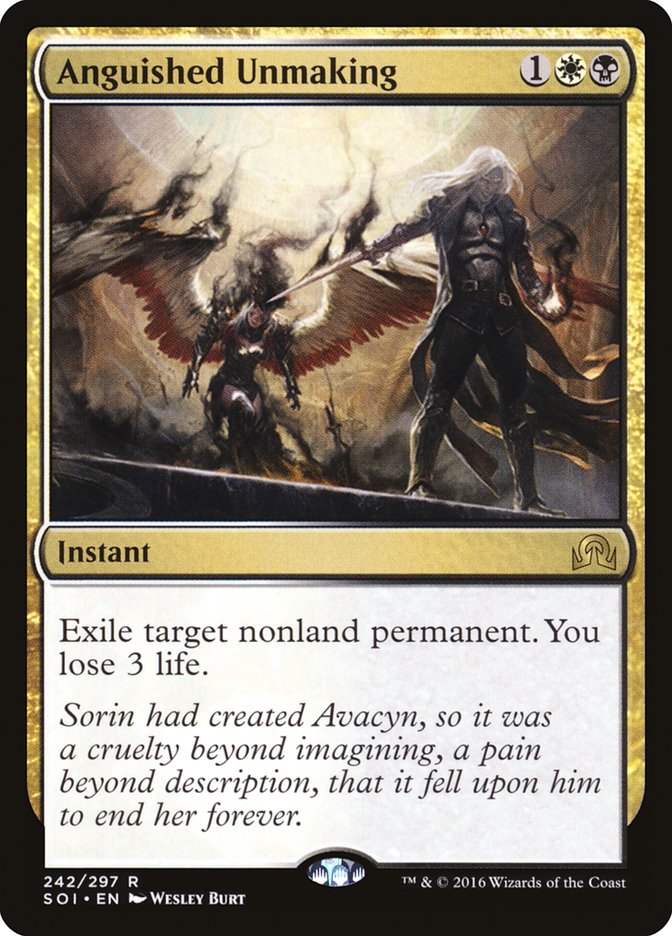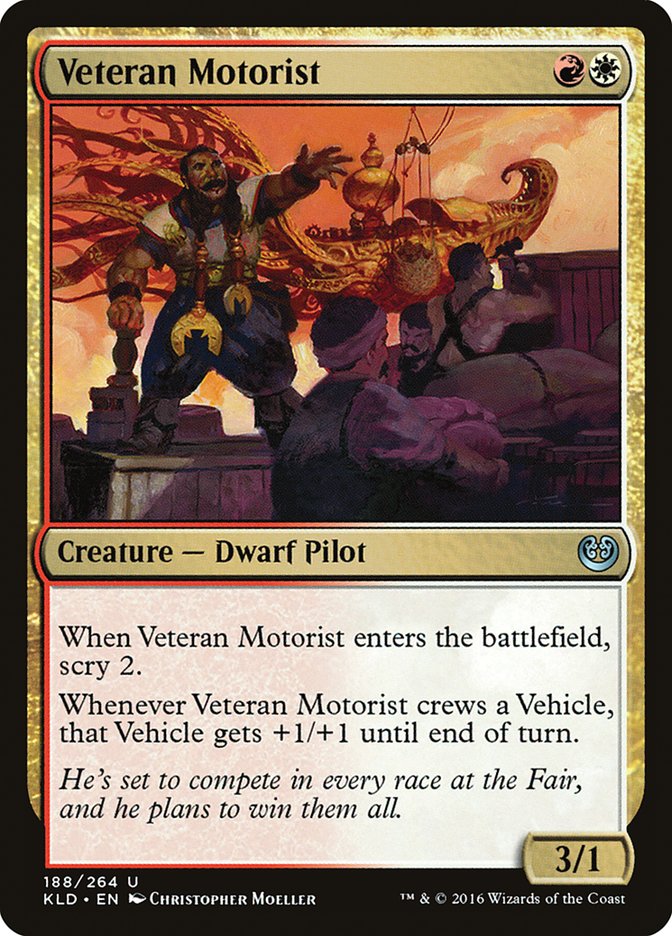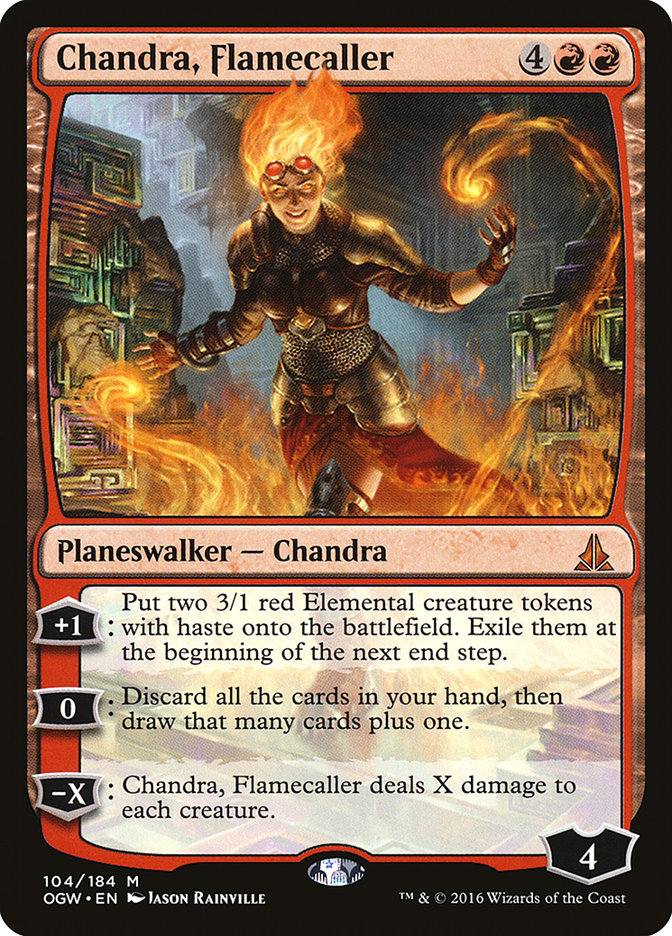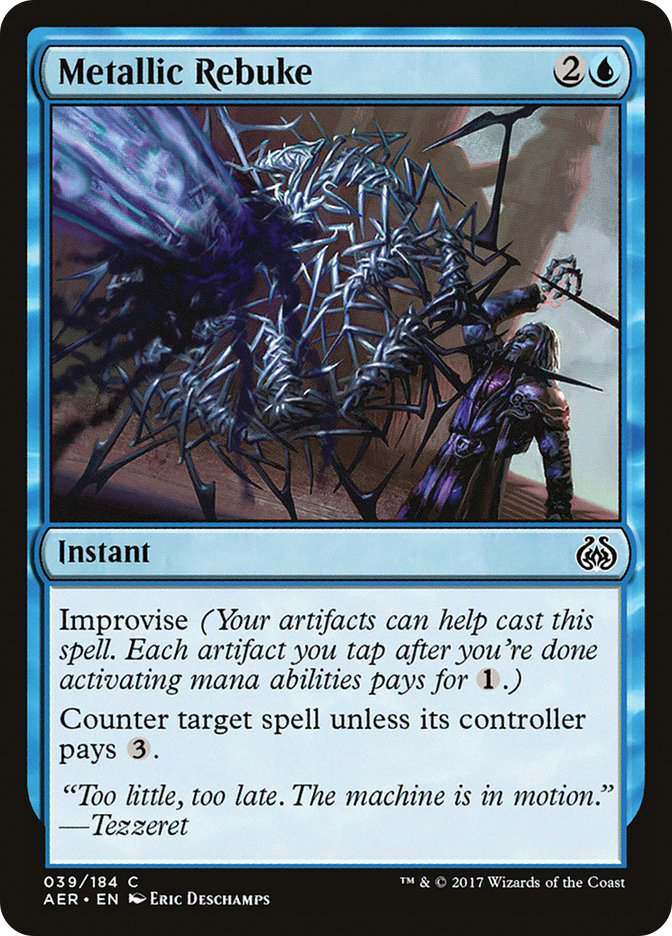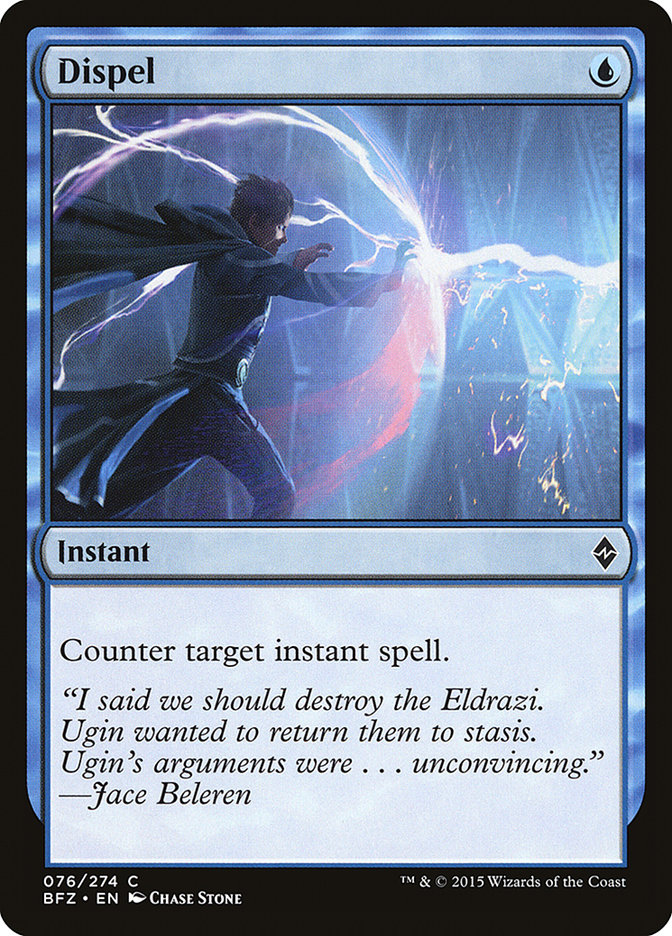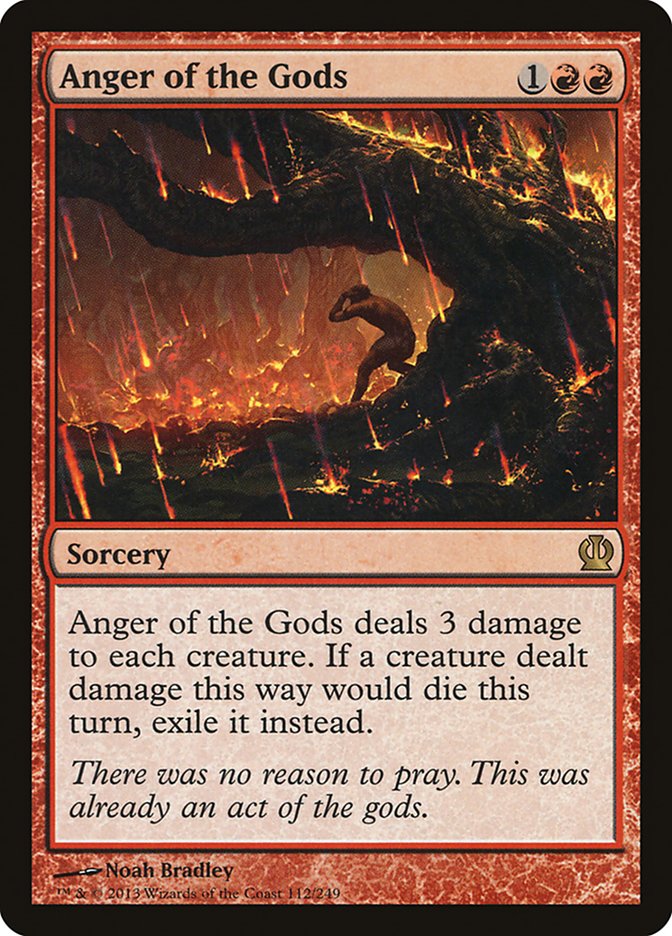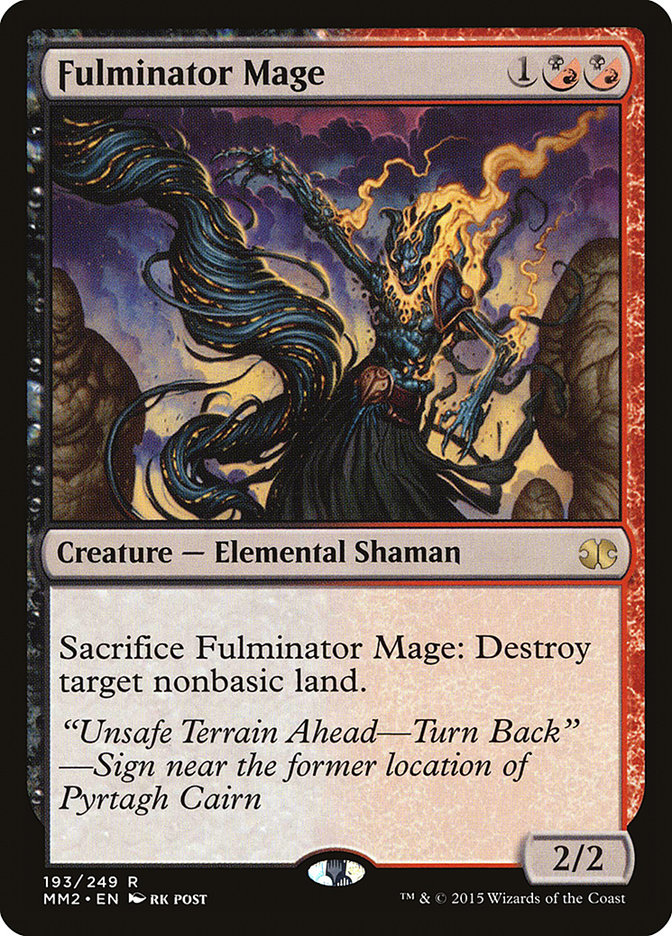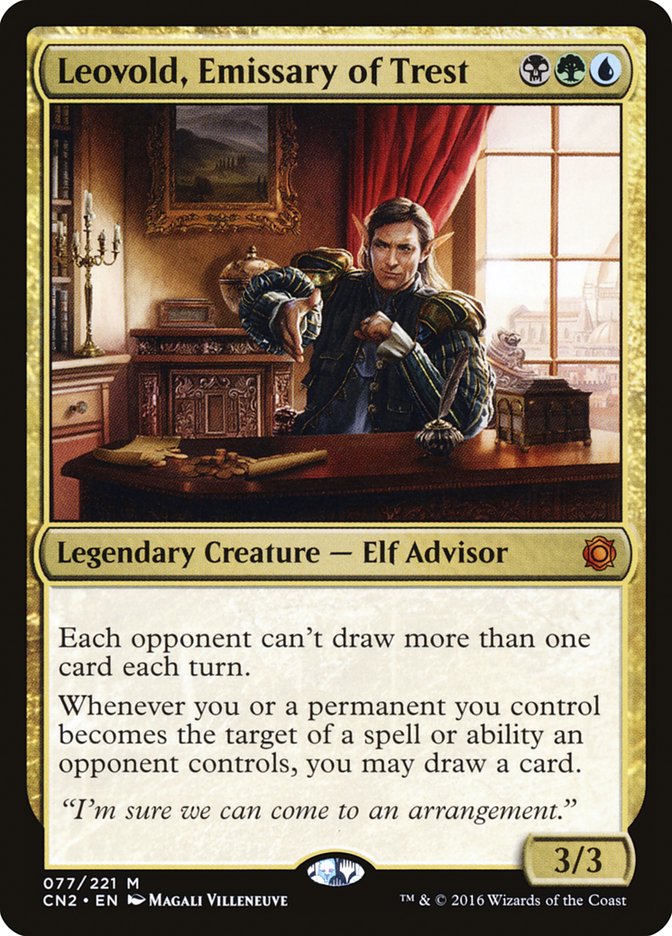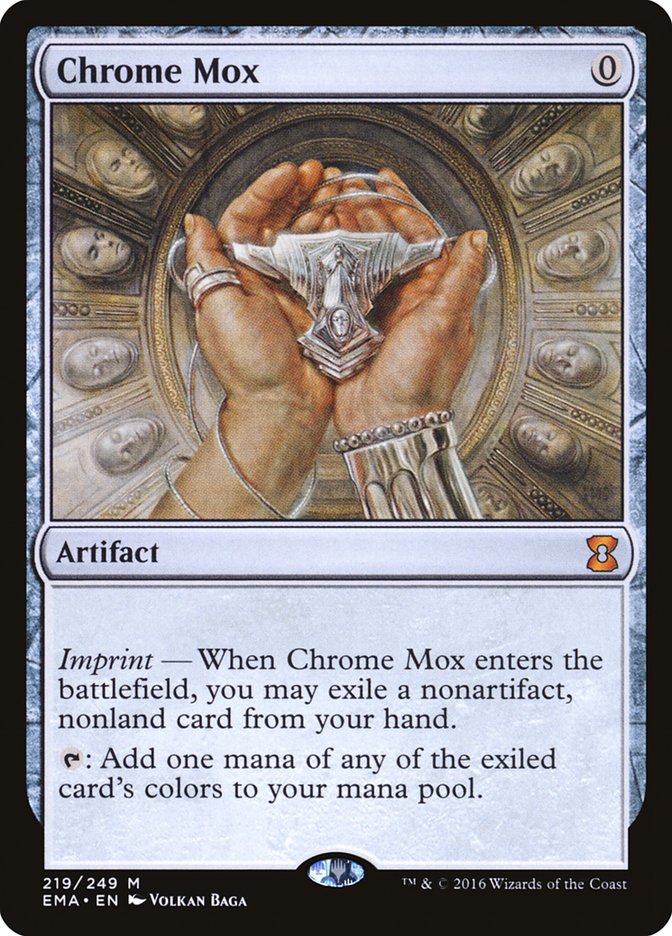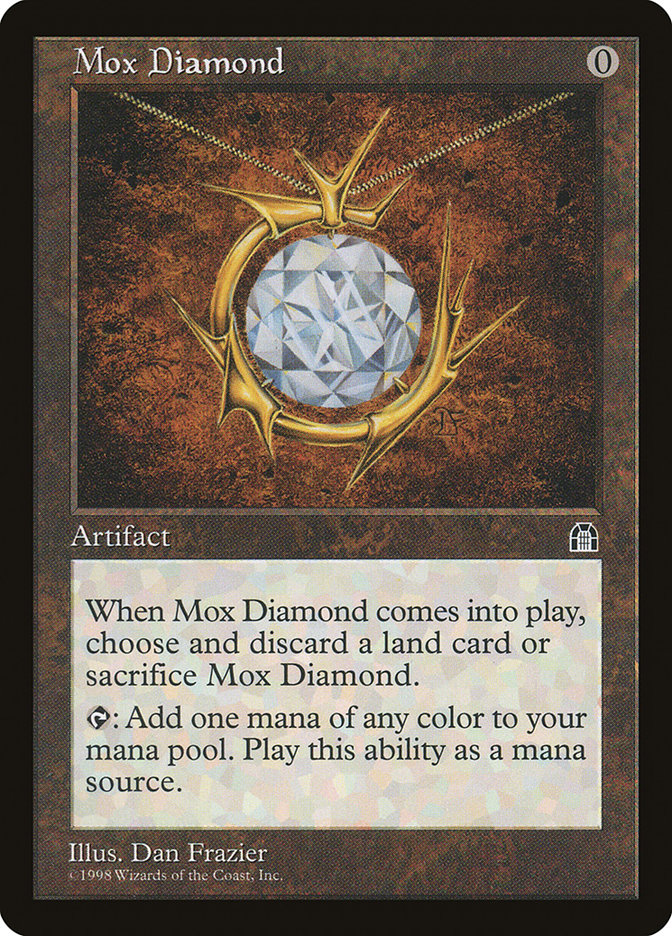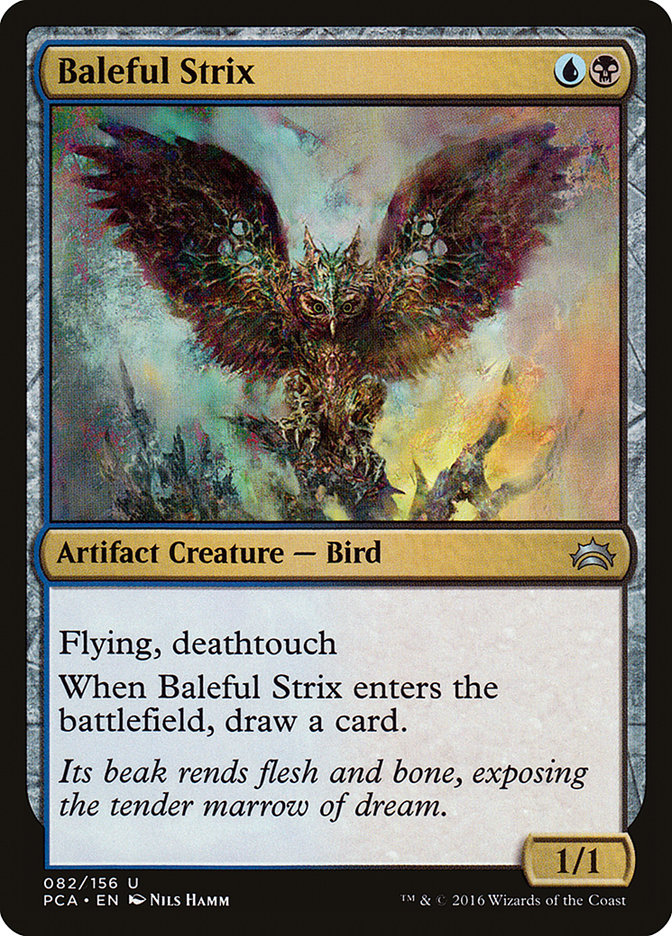I’ve got a few tournaments coming up, notably Grand Prix Las Vegas and the SCG Invitational. That means that, in addition to Standard, I’ve got to work on Modern and Legacy.
And I’m not upset about it.
Standard
Aetherworks Marvel rules Standard, and it’s either “find a way to beat it” or “register it yourself.” While I do think there is a version of Mardu Vehicles that could potentially dominate Aetherworks Marvel, we aren’t quite there yet.
Max McVety did his best by making the semifinals of Grand Prix Montreal, but he was inevitably stopped by Kevin Jones.
Creatures (20)
- 2 Archangel Avacyn
- 4 Thraben Inspector
- 2 Pia Nalaar
- 4 Scrapheap Scrounger
- 4 Toolcraft Exemplar
- 4 Veteran Motorist
Planeswalkers (4)
Lands (24)
Spells (12)

I like a lot of what McVety did to his list:
- Moving away from Fatal Push (and black mana) is a great call right now. Fatal Push doesn’t have many targets, let alone great ones, and revolt was never easy to activate. The Aetherworks decks aren’t even playing Servant of the Conduit anymore.
- Fewer black sources means more room for red sources. That allows you to return to Veteran Motorist, as Walking Ballista isn’t doing much these days.
- Without Felidar Guardian, Glorybringer, or Ishkanah, Grafwidow in the format, Thalia, Heretic Cathar is less good. Again, we make a return to an old card, in this case Pia Nalaar. With no Walking Ballistas, the artifact count is lower for Toolcraft Exemplar, and Pia helps with that.
- Anguished Unmaking is present in larger numbers than we’ve seen before. Right now, it’s one of the best cards for your aggressive deck to have against Aetherworks Marvel. Sometimes they spin, hit Ulamog, and you clear the way; or they spin, miss, and you can tag their Marvel if you want. Assuming Ulamog isn’t completely devastating, you will typically be fine.
With all their Glimmer of Geniuses and Chandra, Flamecallers, modern-day Aetherworks Marvel decks tend to have a tough time against Scrapheap Scrounger, Heart of Kiran, and planeswalkers. Eventually something will stick and it just snowballs from there. Ulamog will likely stabilize them (or at least come close), but if you have an Anguished Unmaking, you will probably win.
Chandra, Flamecaller also makes an appearance in the sideboard. While not as potent in mirror matches as Sorin, Grim Nemesis, Chandra is the best card against Zombies, which Mardu could use some help against. It does look like Zombies had a bad weekend, so maybe it’s not a necessity for right now.
Assuming you wanted to tune the old Mardu shell, McVety’s list is a great place to start. There are some other avenues I’d like to explore, though.
Maindeck Metallic Rebuke is a trend we saw pop up during the SCG Classic in Louisville. I typically like counterspells more than Transgress the Mind or Dispossess against Aetherworks. Ceremonious Rejection was played last season to good success, especially alongside Cultivator’s Caravan. Those Aetherworks decks weren’t even as all-in on Aetherworks Marvel as these versions are, so I imagine Ceremonious Rejection is quite good.
In order to support the four-color manabase, you have a couple of options. Maxing out on Aether Hubs isn’t ideal, especially with Veteran Motorist in the mix, but Aethersphere Harvester helps that. If Aethersphere Harvester were only being played as a mana fixer of sorts, I don’t think it would be worth it. However, I do think it’s mostly a better card than Cultivator’s Caravan.
Maybe the red isn’t worth it anymore. Who are you racing with Unlicensed Disintegration anyway? What red sideboard cards are you looking for? Is having Veteran Motorist really that important?
Mardu is a place I’m going to explore, but my default choice is obviously spinning the Marvel itself. The reality is that Paul Dean broke it.
Creatures (9)
Planeswalkers (2)
Lands (23)
Spells (26)

The biggest innovation is going harder on Yuuya’s Shrine of the Forsaken Gods. Paul added a land (another Shrine) and hardcast many Ulamogs over the course of Grand Prix Montreal. To his credit, Edgar Magalhaes also had a second Shrine of the Forsaken Gods, but his was in the sideboard. Either way, it’s a huge innovation and makes the deck play out much more smoothly.
From Paul’s list, there are very few changes I would make, at least if I were dead set on playing with Glimmer of Genius.
If I wanted to play Servant of the Conduit, it would look something like this:
Creatures (15)
Planeswalkers (5)
Lands (23)
Spells (17)
- 4 Aetherworks Marvel
- 4 Woodweaver's Puzzleknot
- 4 Harnessed Lightning
- 4 Attune with Aether
- 1 Dissenter's Deliverance
Sideboard

The Servant of the Conduit / Glimmer of Genius debate is interesting. On one hand, I have the opportunity to play a combo control deck with a bunch of velocity. On the other, I have a tapout midrange green deck, and I think I’m actually siding with the green deck on this one.
This version doesn’t have the sexy allure of the blue-based Marvel deck, but it is raw and powerful. Having Servant of the Conduit can give you a huge mana advantage against decks like U/R Control and the mirror, which can be huge, especially when you’re trying to fight counter wars.
With more Dispels than Negates, it appears that Paul was using his Dispels offensively to force through his important cards and protect them from removal, but the Servant of the Conduit version simply does that more effectively.
Splashing Nahiri, the Harbinger in these builds seems worth it to me. With only a few white cards, the mana isn’t as horrendous as it might seem. Additionally, I have one more land in my manabase than most people do, so it’s basically free. While sometimes your opponent is going to Ulamog you on turn 4, most of the time it’s reasonable to actually attack their Aetherworks Marvels. Nahiri, Dissenter’s Deliverance, Manglehorn, and Confiscation Coup give you a plethora of ways to do that.
I considered going harder on white cards, but the mana becomes really unstable. The potential big pick-ups would be Spell Queller and maybe Tamiyo, Field Researcher out of the sideboard. With everyone expecting massive amounts of Tireless Trackers coming in out of the sideboard, there will hardly be a “gotcha!” moment with Spell Queller, at least as far as presenting a surprising creature that they might want removal for.
I’m mostly interested in sideboarding into a Fish deck in most matchups. We’ve seen Yuuya Watanabe use Longtusk Cub to do it at Pro Tour Kaladesh, and Daniel Fournier did it something similar at Grand Prix Montreal. Spell Queller seems like a natural fit for that, but it probably won’t work out very well in practice. That, combined with the mana issues, means I’ll likely be sticking with Negate.
Modern
Much like Standard, Modern is also relatively easy: I’m playing Death’s Shadow.
Past that, it gets a little more interesting. I splashed Stubborn Denial out of the sideboard of Jund Death’s Shadow in the last video I did, and that looked quite good. Clay Spicklemire went one further and included them in the maindeck of his SCG Louisville-winning deck.
Creatures (12)
Planeswalkers (2)
Lands (18)
Spells (28)

Creatures (12)
Planeswalkers (3)
Lands (18)
Spells (27)

Creatures (12)
Planeswalkers (2)
Lands (18)
Spells (28)

The only thing I wanted to change about my list was to add the third Tarfire or an Architects of Will, as getting delirium wasn’t trivial. Other than that, I thought it was close to perfect.
Clay moved the Stubborn Denials to the maindeck in lieu of the Temur Battle Rages, and I’m fine with that. All Temur Battle Rage does is end the game more quickly, and Stubborn Denial will allow them that extra turn but probably make it so they can’t do anything useful on their turn. There are scenarios where Temur Battle Rage would win you the game where basically nothing else can, like against a deck with a horde of blockers, but Stubborn Denial is a much better card overall.
One thing I would note is that Anger of Gods is almost a necessity to me now. It’s a little rough on the mana, but it’s worth it for how good it is against random creature decks like Dredge and Counters Company. You could potentially play a second Blood Crypt to help alleviate the mana issue, but the only thing you could cut is a green source, which I don’t think is acceptable.
I was already close to convinced that Fulminator Mage wasn’t necessary, and once you add the Stubborn Denials, it’s definitely true. Clay and Majors both have a singleton Ghost Quarter, which I think is easy enough to do and probably worth it.
At a certain point, you have to wonder what the key cards in the Death’s Shadow deck are. So far, it looks like the black cards and maybe Stubborn Denial are the only things that are truly necessary. If that’s the case, is there a reason why we’re playing four colors? We could easily be Sultai or Grixis.
The next step is figuring out if the green or red is superfluous.
Legacy
This is the fun one, mostly because it’s so up in the air. Sensei’s Divining Top got banned and I don’t know what to think anymore. The initial thought of “Uh oh, is combo just busted now?” crossed my mind, but thankfully that doesn’t seem to be the case.
Without being able to beat up on Miracles players, is my beloved Sultai still viable? (Yes, I know that Miracles players had started claiming Shardless as a positive matchup, but I can count on one hand the amount of times I lost in that matchup.)
So, here’s the thing: I have yet to cast a Leovold, Emissary of Trest.
In my defense, it’s been a while since I’ve played Legacy. Ideally, I’d like to rectify that, since Leovold seems like a lot of fun and it definitely adds a lot to any Sultai shell. At first, I didn’t know how Leovold was going to fit into things, especially since Leovold and Shardless Agent compete for mostly the same spot. Thankfully, Jim Davis figured it out for me with his Big Leo 6 deck.
Creatures (15)
- 3 Tarmogoyf
- 1 Scavenging Ooze
- 2 Baleful Strix
- 4 Deathrite Shaman
- 2 True-Name Nemesis
- 3 Leovold, Emissary of Trest
Planeswalkers (3)
Lands (18)
Spells (24)

Green Sun’s Zenith is a great addition to the deck. Reid Duke was already playing Noble Hierarch to accelerate into three-drops in his Grand Prix Louisville-winning deck, but Green Sun’s Zenith is more flexible. Additionally, it adds to your threat density while Noble Hierarch detracts from it, which can be important in grindy Sultai decks.
Obviously there’s a “danger of cool things” at play here, where the toolbox potential of Green Sun’s Zenith could be tempting, but we have to resist! To his credit, Jim mostly kept it to a minimum, which I respect, but let’s be honest. Nimble Mongoose wasn’t beating Miracles.
I could see a world where Chrome Mox or Mox Diamond alongside Wastelands and a TItania, Protector of Argoth allows you to crush midrange mirrors. That’s probably going a little bit too far down the rabbit hole, though.
While some sort of Leovold deck is my default choice, it’s not the only one. Up next is the deck I’m really excited about.
I’ve been down this road before, and it didn’t work out well, but hey, let’s try it again!
With what we learned about Death’s Shadow in Modern could potentially be leveraged in Legacy. Obviously I’m more partial to blue cards, and I think those work quite well with Death’s Shadow in general. Force of Will is kind of the perfect card for the deck, since it’s free, protects you from combo decks, protects your threats, and even pays life!
You could build a U/B Death’s Shadow deck to be midrange, control, or tempo. Of those, I prefer something proactive. A Wasteland / Daze package could be good, which would allow the deck to function like a Delver deck, but I’m not sure that’s the best way to do things.
Stubborn Denial is a huge pickup from recent sets, as is Gurmag Angler. I used to play green in these decks for Tarmogoyf, but that’s no longer necessary. With Sensei’s Divining Top out of the picture, we don’t need Abrupt Decay either. Chalice of the Void could cause some problems, but it’s nothing Engineered Explosives can’t handle.
This is what I’ve been brewing lately:
Creatures (12)
Lands (16)
Spells (32)

Majors was highly offended by my omission of Deathrite Shaman. In all fairness, I’m not a huge fan of Deathrite Shaman when there is zero hope of accelerating into anything big. That could change if I added something like Snapcaster Mage or some planeswalkers, but I’m not about that. Most of the time, you’re paying one mana to get a mana on each subsequent turn. While that’s sometimes helpful (like in Grixis Delver), it’s not something I want here.
One of the main issues I see with this version of the deck is that there’s no card advantage. For the most part, you’re relying on your low land count to ensure you have enough gas, even if your opponent gets a little card advantage on you. Most of the time, that’s going to work out, but not always. The main hope is that your big creatures invalidate their Lightning Bolts (and sometimes Fatal Pushes) and eventually you stick a threat they can’t deal with.
Baleful Strix was always a huge problem for decks like these, and I don’t think Ensnare is a great answer. Darkblast might be something worth looking into, but again, it’s not a great solution. Despite those issues, I might play it anyway.
***
Even though these decks are mostly boring, tuned versions of known archetypes, they continue to be interesting to me because of how much customization is available within them. I’m going to work on other stuff in the meantime because I’m sure people don’t want to only hear about Death’s Shadow and Aetherworks Marvel every week.
Just don’t be surprised if some incredibly lengthy primers on those decks show up in the next month or so.


